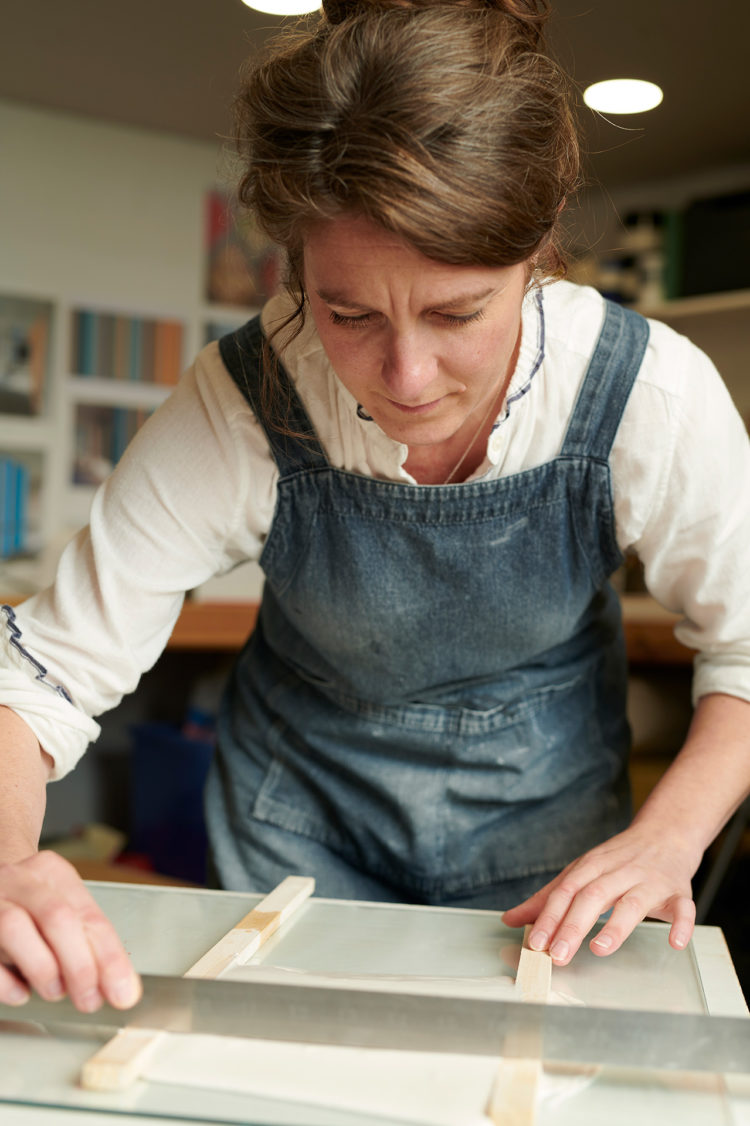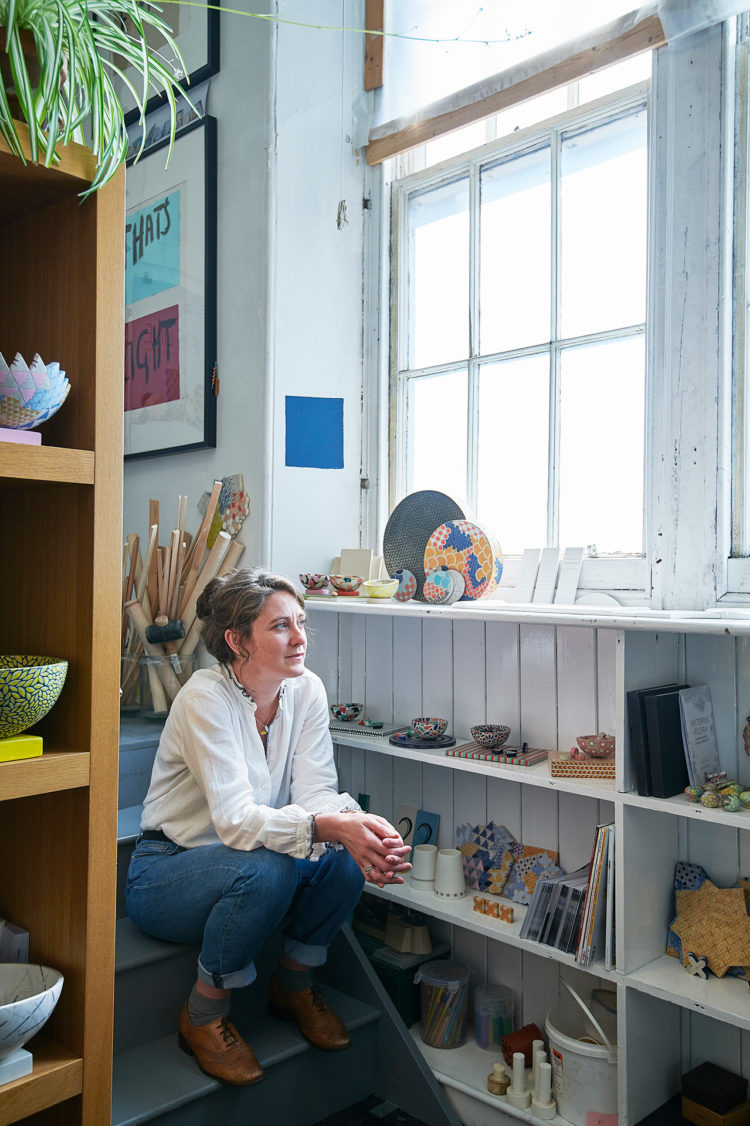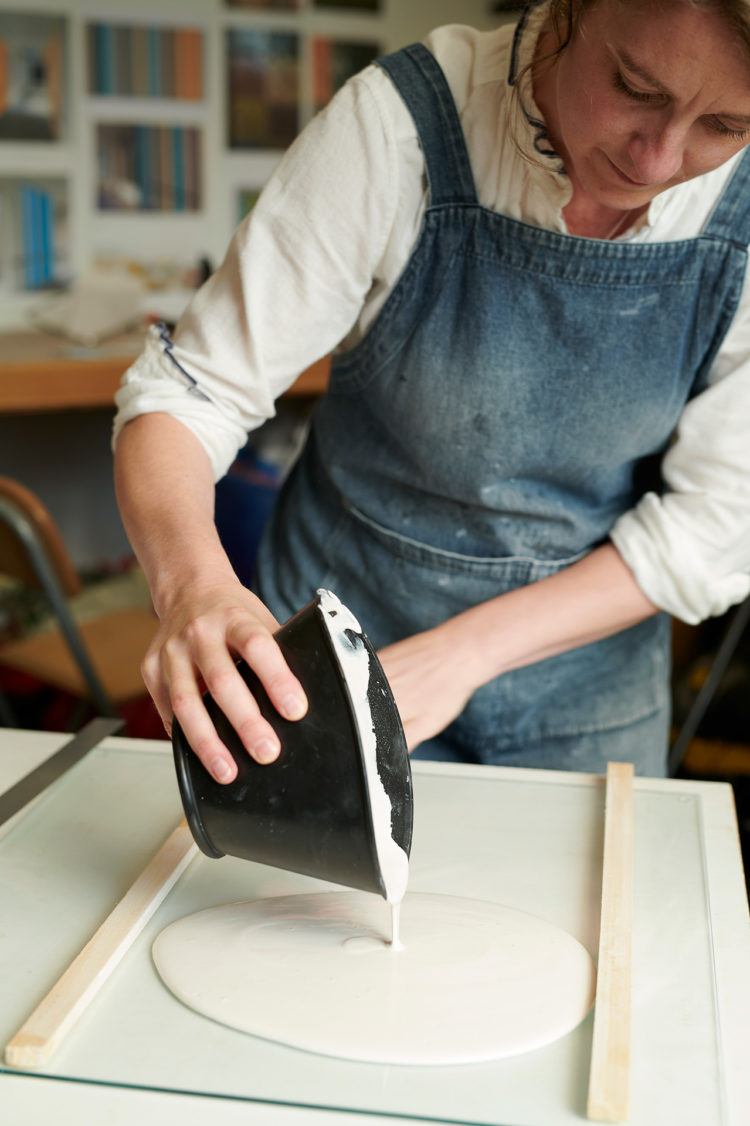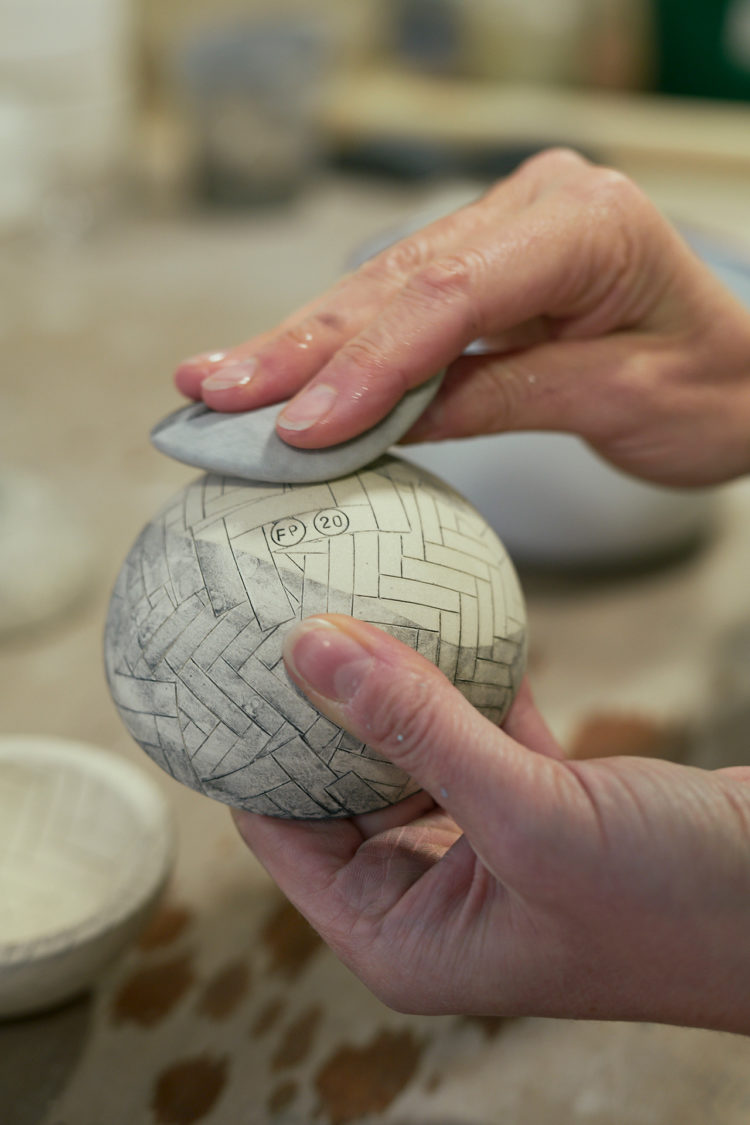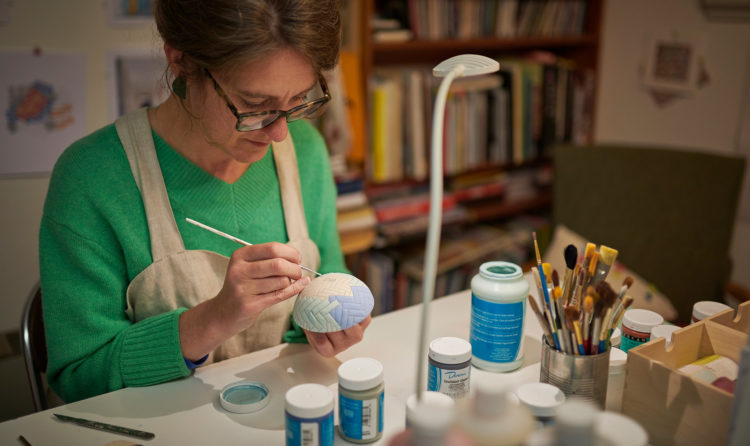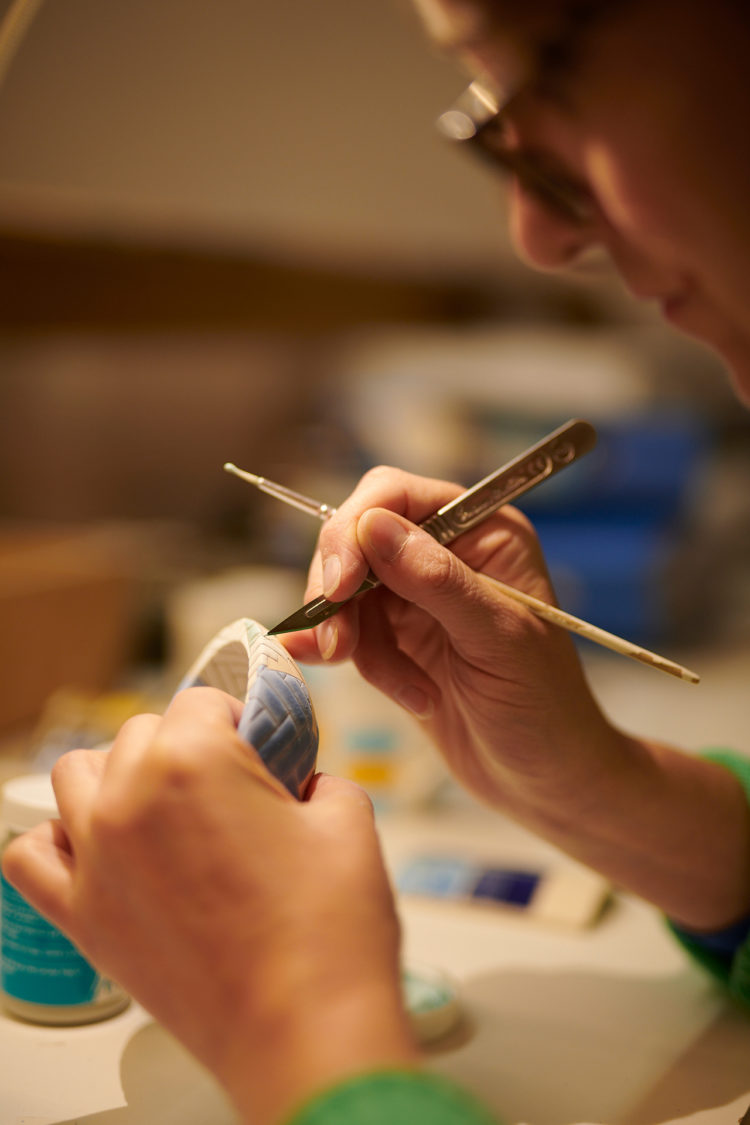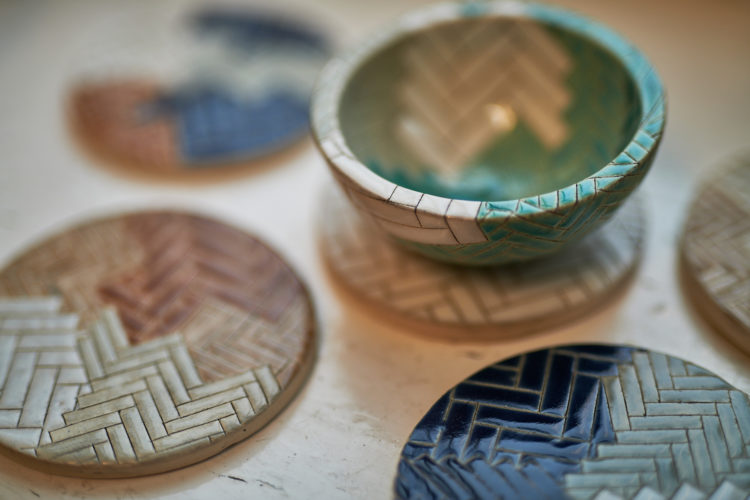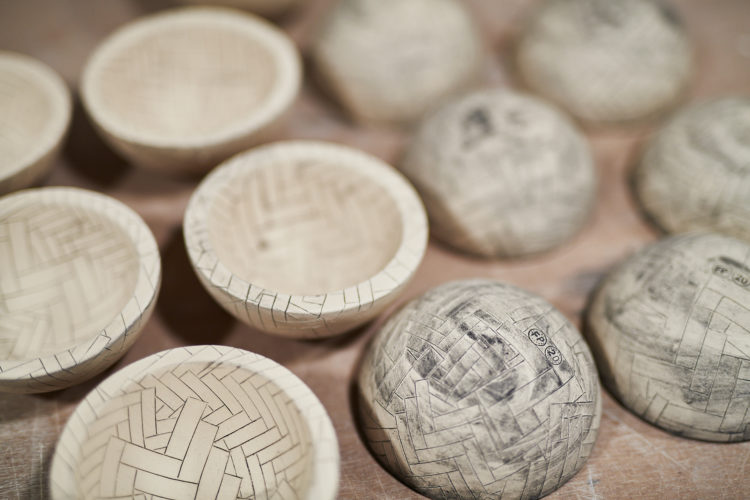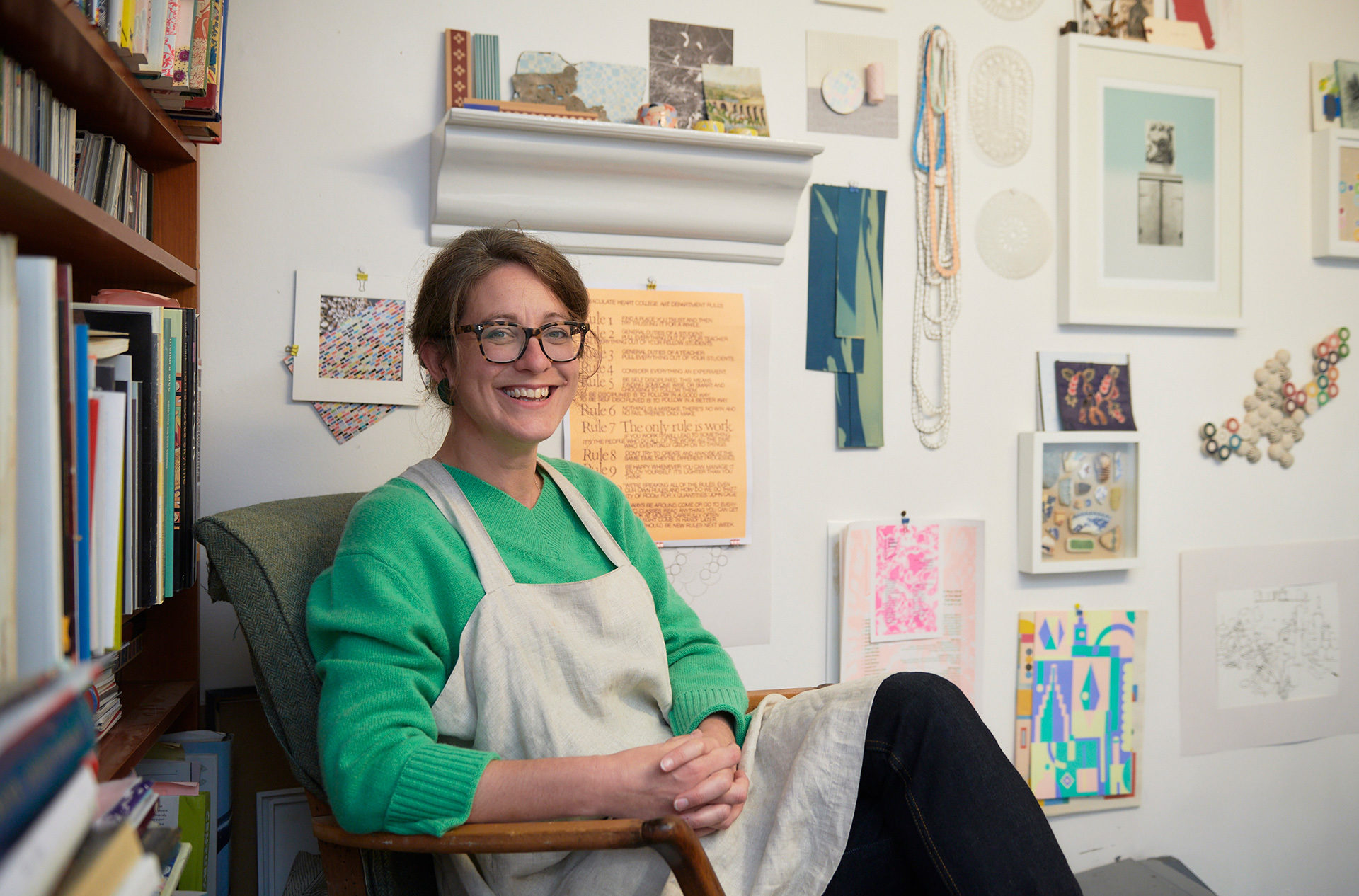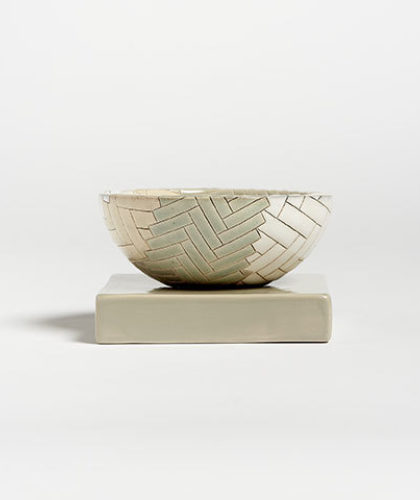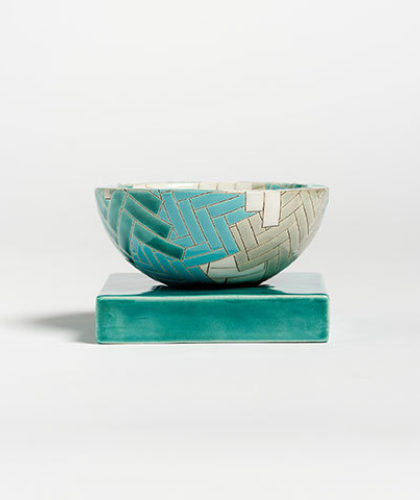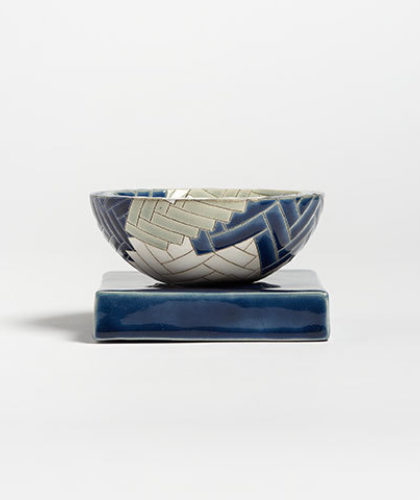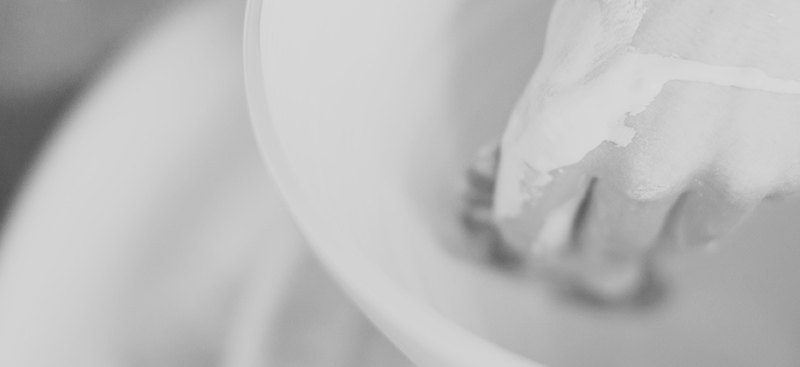Frances Priest
Ceramic Artist
As a child, Frances Priest spent happy hours tracing with her finger over the intricate designs in a Victorian pattern book given to her by her father.
She imagined a future in textile design, but while completing an Art Foundation course, she was steered towards ceramics by acclaimed Raku artist David Roberts. But her fascination with decorative art has never left; “pattern and drawing are still very much at the heart of my practice,” says Priest.
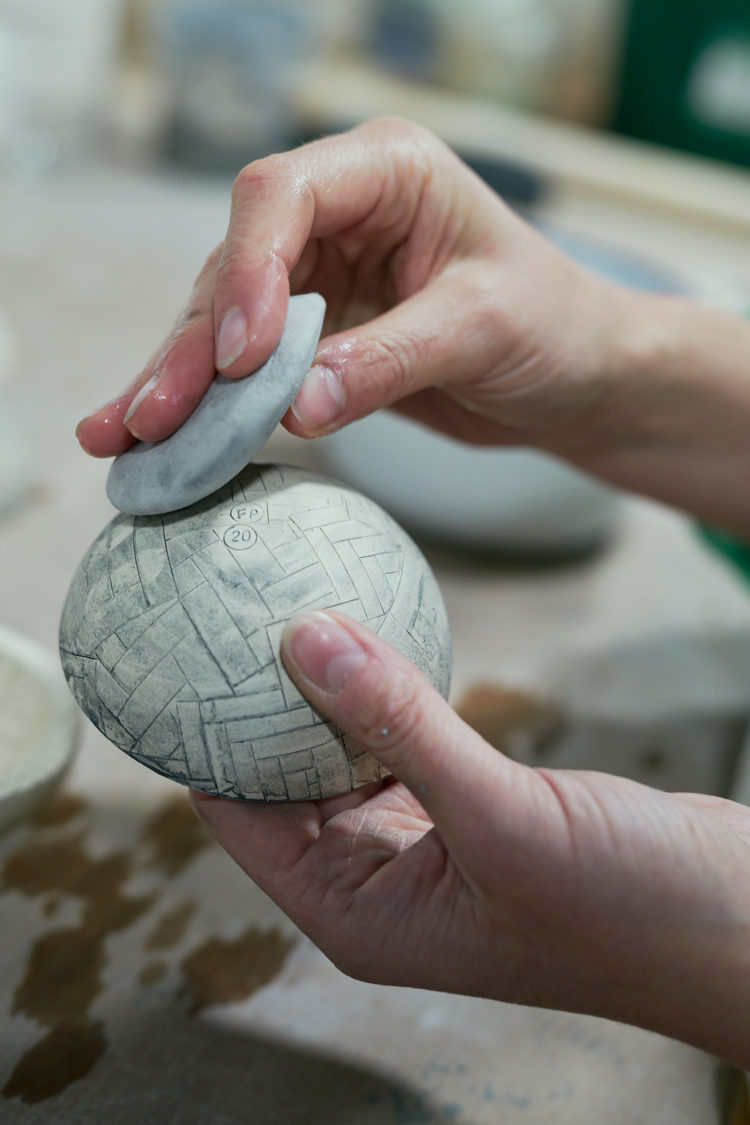
A residency in Thailand led to travels through South-East Asia, which consolidated her love of pattern: “There, you encounter decorative art everywhere you go. There is a level of detail in even the most everyday objects which is missing in our contemporary life.” Much of Priest’s early work was sculptural and architectural, “but even with larger-scale work, I’m conscious of the intimacy of the detail – the viewer is always drawn to the human scale.”
The bowls that Priest has created for The Garnered are beautiful objects in their own right, but Priest imagines that they might also be used as holders for keepsakes or collections of precious objects, pebbles or shells. “I make larger scale sculptural vessels that I have always referred to as ‘gathering places’ – because they hold in one place motifs and patterns that I research and collect together." The idea of collecting beachcombings is fitting with the inspiration for the project: the weather-filled beaches of Sanday, an island in the Orkneys off the Scottish coast. “It’s where my partner grew up, but it has become very special to me as well.”
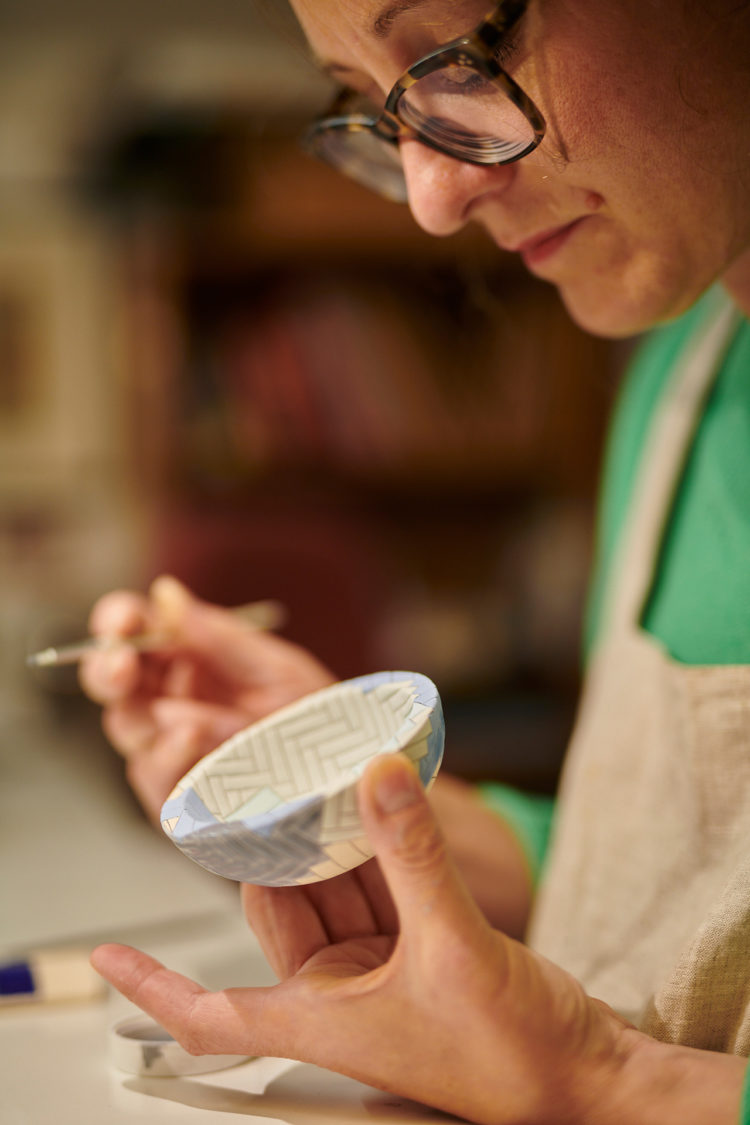
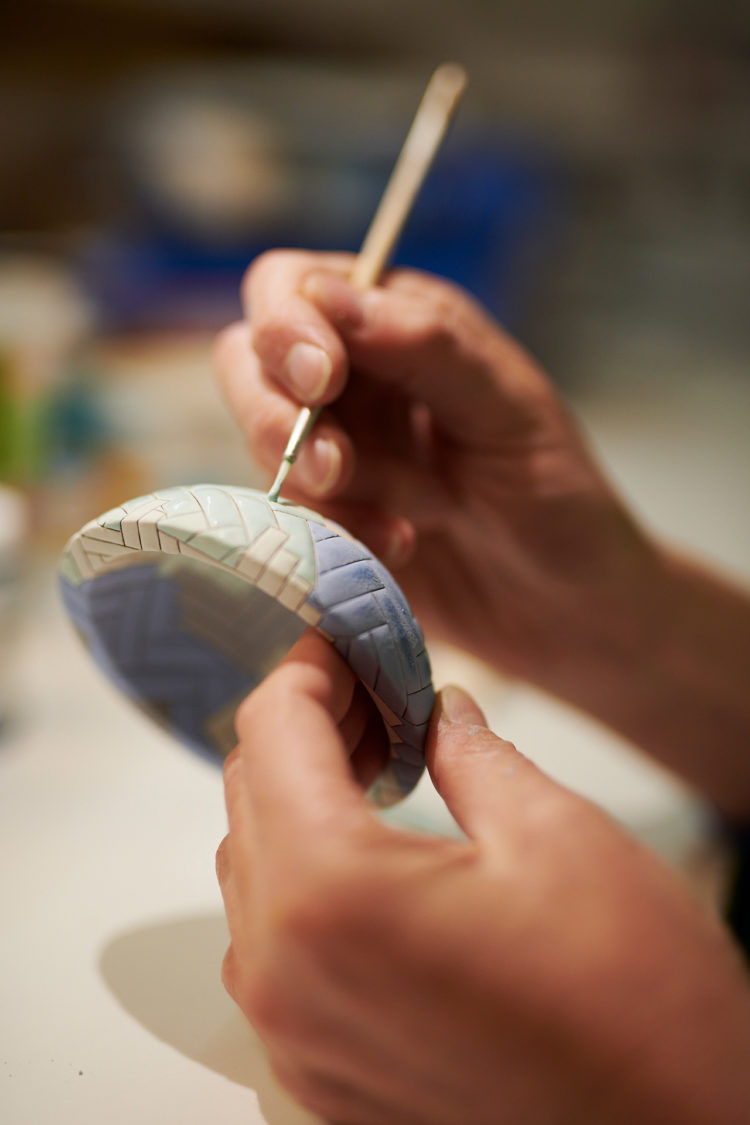
The palette of the Sanday beaches informed the glazes Priest chose: “You have the strata of the rusty brown of the kelp and then the white sand – which shifts between bright white and the greys where the waves come in – and then you go into the turquoise shallows and you end up in deep, dark blues. It is difficult to improve on what nature offers, so that’s why I’ve brought in the pattern. It’s a parquet pattern which references woven cloth – fitting as you’re always in woollies or tweeds on those beaches.”
To make the bowls, first she presses a sheet of clay into a mould, which is left to dry to leather hard – “the perfect canvas for drawing onto” – before she inscribes the pattern into the surface using a scalpel. It is then bisque fired before Priest washes an oxide over the surface. “The oxide embeds itself into the drawn lines so you have a black and white drawing – like a colouring-in sheet onto which I apply the glazes.” The finished bowls sit on a small glazed ceramic square, “like a little plinth”. “Elevating the bowl gives it its own space and a sense of being precious,” says Priest.
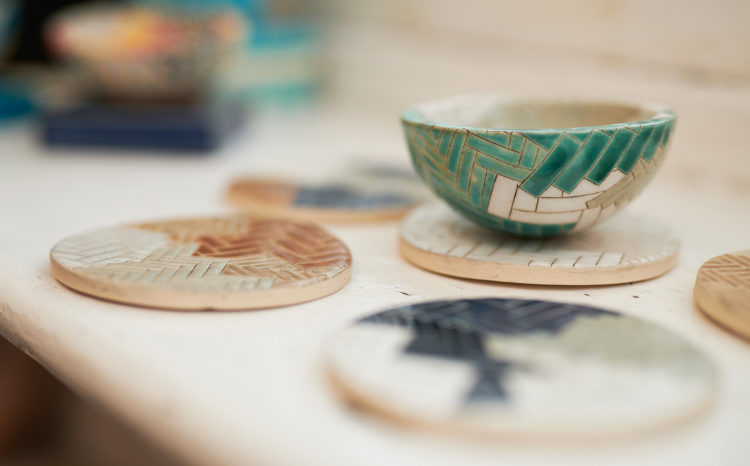
“I make larger sculptural scale vessels that I’ve always referred to as ‘gathering places’ – because they hold in one place the motifs and patterns that I research and collect together.”Frances Priest


